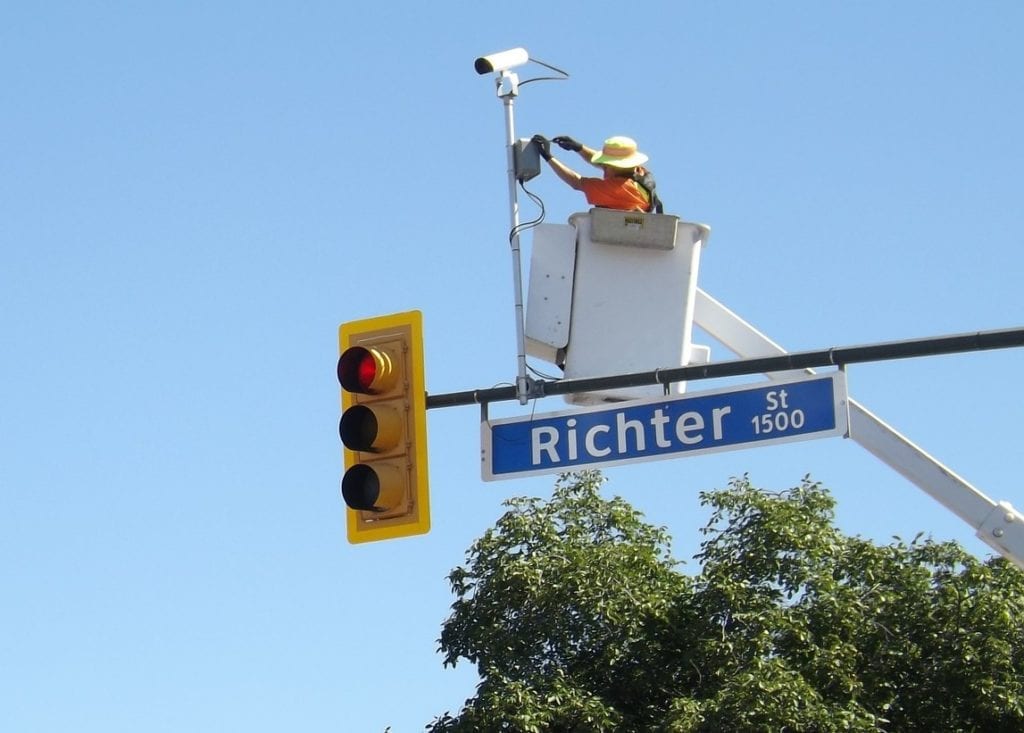A new study by the Insurance Institute for Highway Safety shows these devices reduce fatalities.
There aren’t a lot of vocal fans in favor of red light cameras. However, according to a new study published by the Insurance Institute for Highway Safety (IIHS), these controversial gadgets may be more useful than we think.
The study revealed that these stoplight cameras do, in fact, save lives when they are installed at intersections.
Moreover, the IIHS research also pointed out that when cities remove red light cameras, accidents at those intersections rose by 30 percent. Still, while the study showed strong overall community support for these safety devices, those opposed have been more vocal. Many jurisdictions have responded to the community members who have made the most noise, regardless of their numbers. This has led several to shut off the cameras. The IIHS study recorded a rise in crashes at those intersections following the device removal.
There are still programs for red light cameras being launched in a number of communities across the U.S.
 That said, the number of communities using traffic light cameras dropped from its peak in 2012 at 533 to 467 last year. The study found that those programs saved an estimated 1,300 lives among 79 large American cities from 2012 through 2014. The reason, said the IIHS, is that when the programs are shut down, red light running rises. The number of crashes and fatalities rise along with it.
That said, the number of communities using traffic light cameras dropped from its peak in 2012 at 533 to 467 last year. The study found that those programs saved an estimated 1,300 lives among 79 large American cities from 2012 through 2014. The reason, said the IIHS, is that when the programs are shut down, red light running rises. The number of crashes and fatalities rise along with it.
This not only increases the risks of accidents and death at those intersections but it may also cause auto insurance premiums to rise. The insurance industry tracks the number of crashes that occur in different areas across the country. When there are more accidents within a certain place, that location is considered to be a higher risk. When more risk is involved, it can mean that drivers pay more simply for having to use those roads.
According to Adrian Lund, IIHS president, “We know we have a problem: people dying at signalized intersections because of people running red lights.” Lund was quoted when presenting the new research. “We know red light cameras are part of the solution,” he said.

Here they go again!
The latest Insurance Institute for Highway Safety (IIHS) report appears to use the same statistical trickery as earlier pro-camera reports the organization has issued. For instance:
Their researchers award safety credit to red-light cameras based on the halo or spillover effect. Essentially if a city has red-light cameras at some intersections, IIHS credits the cameras for favorable safety numbers at all intersections throughout the city, cameras or no cameras. As statistical acrobatics go, this one is breathtaking.”
IIHS is reporting “fatal crashes at signalized intersections.” That number usually quite small within any given city. The difference between a couple of accidents in year one and a couple more in year two can make a statistical anomaly look like a 50 to 100 percent increase.
IIHS doesn’t release their data. The information that forms the basis of these types of reports can’t be peer reviewed let alone replicated. WHERE IS THE DATA IIHS?
The IIHS press release for this report states, “Although surveys have found strong support for red light cameras in communities that have them, opposition from a vocal minority has led some jurisdictions to shut off their cameras.” Contrast that with the facts. Since 1991, 38 communities throughout the United States have put their red-light and/or speed cameras on the public ballot for an up-or-down vote. Thirty-four of them – 90 percent – voted to shut down the camera programs, in many instances by overwhelming majorities. The term “vocal minority” used by the IIHS displays a pro-camera bias to their thinking.
The IIHS is a non-profit organization funded by auto insurers. Since the IIHS first-and-foremost represents the interests of the 80 insurance companies from which it receives its funding, it has been suggested that a primary motivation is to influence public opinion and legislation aimed at making insurance companies more profitable.
Shelia Dunn, National Motorists Association Communications Director, motorists.org